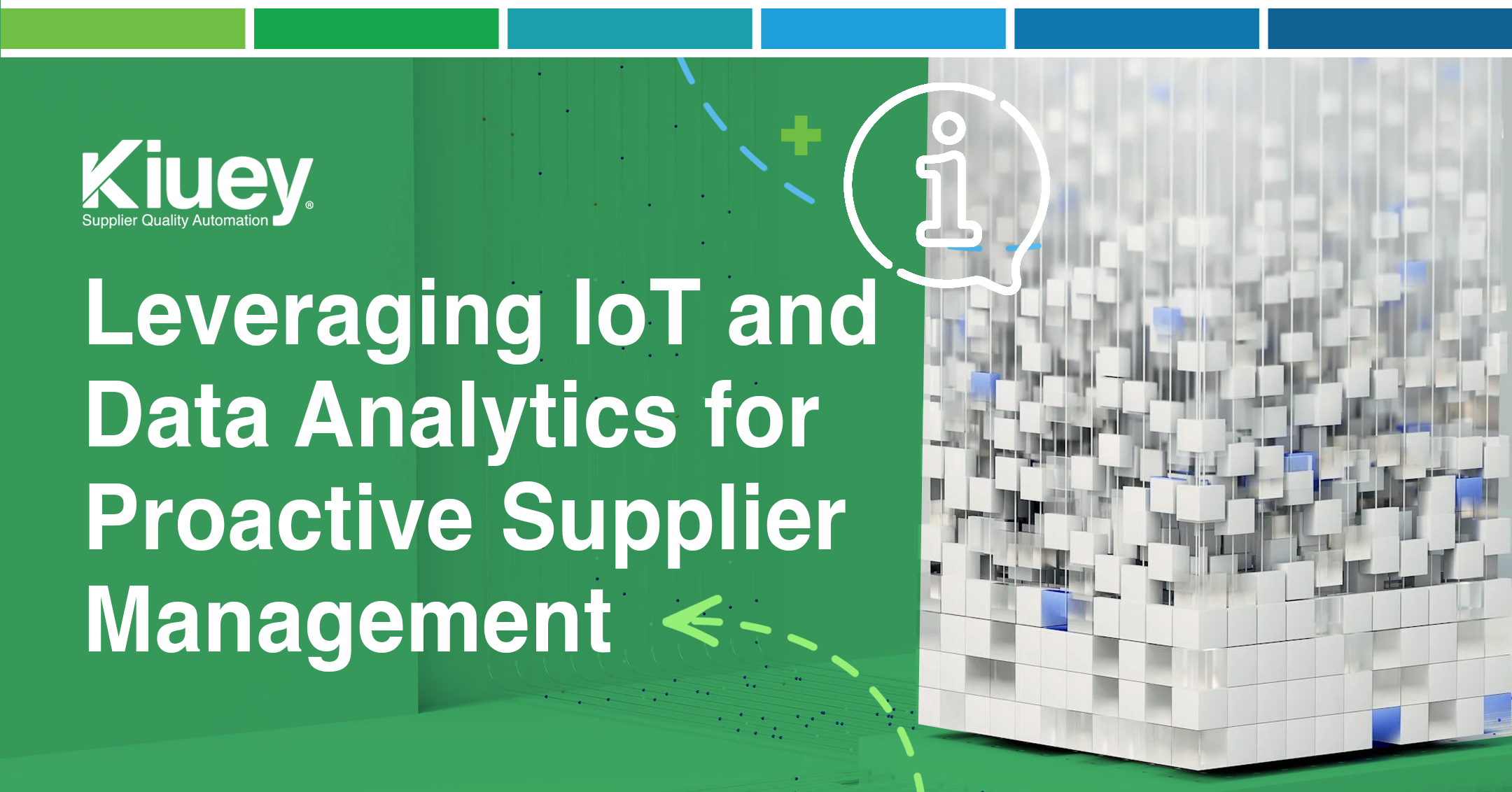
In today’s fast-paced global supply chains, real-time visibility into supplier performance is crucial for maintaining quality standards, reducing costs, and mitigating risks. Traditional methods of monitoring supplier performance often rely on periodic audits and manual data collection, which can be time-consuming and prone to errors. However, the emergence of Internet of Things (IoT) technology and advanced data analytics has revolutionized the way organizations can monitor their suppliers.
How IoT and Data Analytics Can Enhance Supplier Performance Monitoring
IoT devices, such as sensors and RFID tags, can be embedded in products, equipment, and facilities to collect real-time data on various parameters, including:
- Product Quality: Monitor factors like temperature, humidity, and vibration to ensure product integrity.
- Equipment Performance: Track equipment uptime, maintenance needs, and energy consumption.
- Supply Chain Visibility: Track the movement of goods and materials through the supply chain.
By collecting and analyzing this data, organizations can gain valuable insights into supplier performance and identify potential issues before they escalate.
Key Benefits of Real-Time Supplier Performance Monitoring
- Improved Quality Control: Real-time monitoring enables organizations to identify and address quality issues promptly.
- Enhanced Supply Chain Visibility: By tracking the movement of goods, organizations can improve delivery times and reduce lead times.
- Optimized Inventory Management: Real-time data on inventory levels can help optimize stock levels and reduce holding costs.
- Reduced Costs: By identifying inefficiencies and waste, organizations can reduce operational costs.
- Enhanced Risk Management: Proactive monitoring can help identify and mitigate potential risks, such as supplier failures or supply chain disruptions.
Implementing Real-Time Supplier Performance Monitoring
To effectively implement real-time supplier performance monitoring, organizations should consider the following steps:
- Identify Key Performance Indicators (KPIs): Determine the critical metrics that need to be monitored, such as on-time delivery, quality defects, and cost performance.
- Select Appropriate IoT Devices: Choose IoT devices that are suitable for the specific needs of the supply chain.
- Data Collection and Integration: Establish a robust data collection and integration process to ensure data accuracy and consistency.
- Data Analytics and Visualization: Utilize advanced data analytics tools to analyze the collected data and generate actionable insights.
- Collaboration and Communication: Foster collaboration between procurement, supply chain, and IT teams to ensure effective implementation and data sharing.
By leveraging IoT and data analytics, organizations can gain a competitive edge by achieving greater visibility, efficiency, and control over their supply chains.
Subscribe to our newsletter.
Your go-to destination for insights, best practices, and innovative solutions in supplier quality assurance.
Recent Posts
Improve vendor oversight & reduce risks with automated audits
November 19, 2025
How to solve missed deadlines due to late approval in PPAP
November 13, 2025
The benefits of digital tools for CAPA management
November 11, 2025
The 18 PPAP elements explained: What you need to know
November 5, 2025
Categories
Let's talk to see how PPAP Manager can help your company to save time and money.




